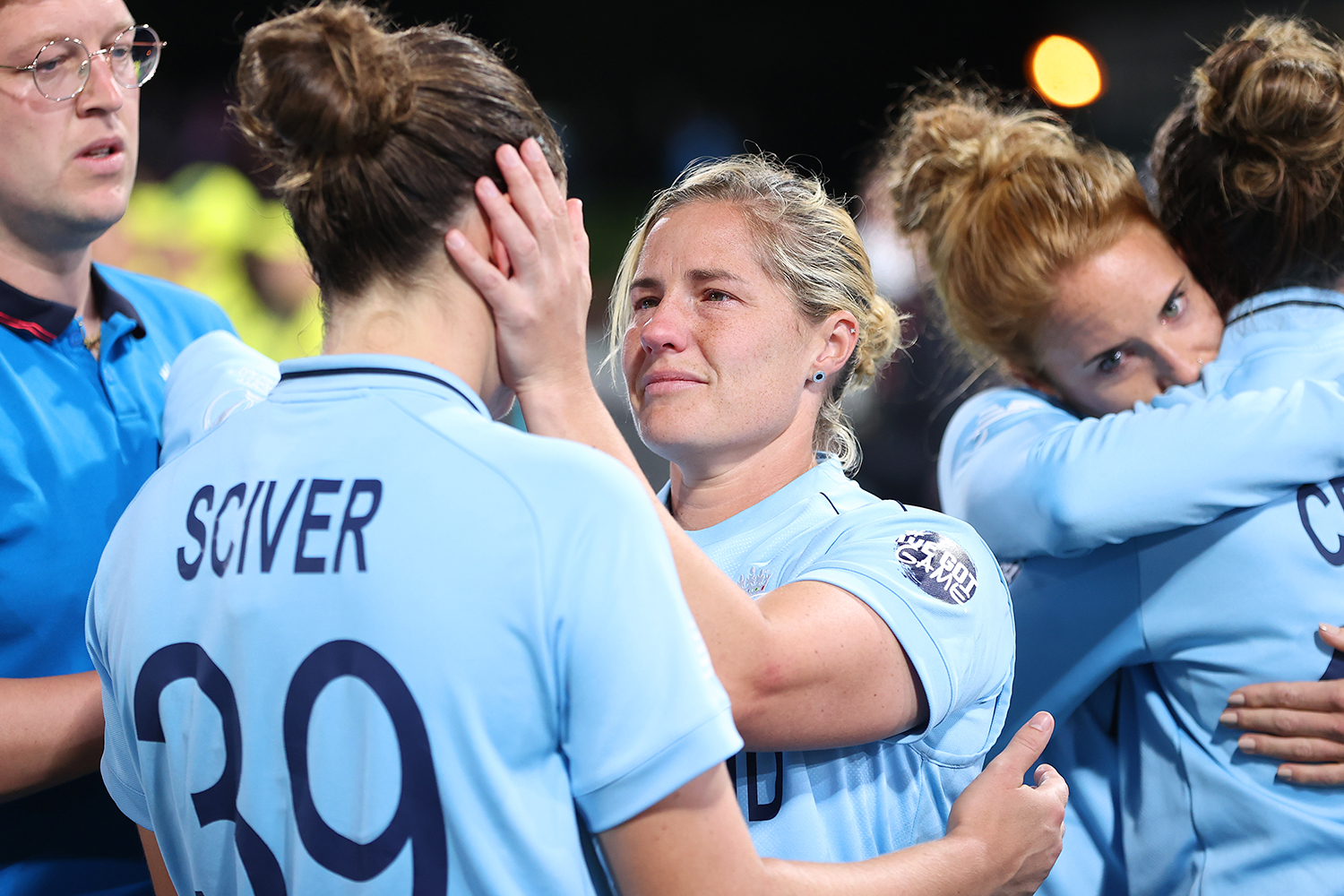Tom Daley, Megan Rapinoe, Billie Jean King: some of the names people will reel off when asked to think of historic LGBTQ+ sports stars.
Years of progress in gay equality has enabled more and more sportspeople to come out publicly. But there are still areas of the sporting world where it is glaringly apparent it is not seen as safe for players to come out – there are no high-level male footballers or tennis players who are out.
This has been seen as some sort of gay glass ceiling, whether it’s because gay boys quit sport at younger ages due to homophobic environments or are forced to be closeted. There is an assumption the ceiling will be smashed at some point, and even the most unreachable parts of sport will have openly gay athletes. Yet as the world appears to become more hostile towards LGBTQ+ people, there is a risk fewer sportspeople will come out.
Women’s sport, however, has been an example of what an accepting environment for gay people can look like.
Current England women’s cricket captain Natalie Sciver-Brunt publicly came out in 2019 when she got engaged to team-mate Katherine Brunt. Lionesses Jess Carter and Beth Mead have spoken openly about their sexuality and relationships. And the England women’s rugby team would probably delightedly claim the mantle of being the gayest national sports team we have. Many players at the Rugby World Cup have spoken about being in gay relationships.
Women’s sporting environments tend to contain more LGBTQ+ women for a variety of reasons, including being a more accepting place for people to explore their sexuality and come out, or being seen as a place to meet other LGBTQ+ women. At a professional level, they have also had the advantage of garnering relatively little public attention.
As the popularity of women’s sport grows, players have begun to consider their privacy. Intrusions from fans and the press have made them more aware about what they reveal.
For some footballers, their social media might suggest they are in relationships with women but it is not something they choose to publicly confirm. This gives them a protection from further questioning while allowing some level of insight into their lives. That can be seen as a step forward. The idea that people would not need to publicly come out has long been accepted as a goal for LGBTQ+ communities.
Yet it can create a sense these players don’t want to speak on LGBTQ+ issues. The expectation that every gay person in the public eye should have to advocate for their community is a high standard to demand. But with a wider cultural shift away from LGBTQ+ acceptance, it feels more important than ever that people within sport can speak up.
Homophobic incidents at men’s football matches increased last season across the English pyramid. Meanwhile, the Premier League has announced they will no longer partner with Stonewall, ending its participation in the charity’s Rainbow Laces campaign. A fixture of the football calendar since 2014, players wore rainbow laces or captain’s armbands to support the LGBTQ+ charity.
Last year’s campaign caused controversy after Sam Morsy, the captain of Ipswich Town, refused to wear the armband on religious grounds. Marc Guéhi, captain of Crystal Palace, wrote “I love Jesus” on his and Manchester United abandoned plans to wear a Pride warm-up jacket after a player refused to take part also due to religious beliefs.
The Premier League says it will replace Rainbow Laces with its own campaign in LGBTQ+ History Month in February but the wider context of institutions distancing themselves from Stonewall largely came as a result of its positive stance on transgender people.
The decision by sportspeople to stay in the closet has related to perceptions around gender as much as sexuality. Men who are attracted to men are often seen as feminine, which in sporting contexts is interpreted as a weakness, while women who are attracted to women are sometimes seen as masculine.
Masculinity within women’s sports has become more risky with the rise of transphobia. It has become common for masculine-presenting athletes to be subject to internet pile-ons, accusing them of being transgender women.
The experience of Paris Olympic boxing champion Imane Khelif demonstrates how a relatively unknown athlete can be thrust into the public eye and their private medical history invaded.
The link between increased levels of transphobia and sportspeople being less willing to come out may not appear immediately obvious, but the desire to appear suitably feminine may lead to some athletes feeling like appearing to be heterosexual is the safest option.
Whether it is around attitudes to gender or sexuality, LGBTQ+ acceptance is regressing. It has an impact at every level of society, but particularly in sport which has challenges for athletes wanting to come out. It is more important than ever to have vocal gay athletes who can uplift LGBTQ+ people participating at every level. Otherwise the progress toward a welcoming environment for all in sport may grind to a halt.
Photograph by Phil Walter/ICC/Getty
